Discover the Stunning Bird Diversity in Kruger National Park – From Birds of Prey to Rare Species and Migratory Birds and experience the magic of other wildlife
- Over 500 different bird species have been seen
- 21 diverse species of antelope
- Other mammals such as giraffes, hippos, zebras
- 49 different fish species
- Smaller animals
Content
- 7 different types of birds to tick off on your bird viewing list
- 2 Species of Birds of Prey – raptors
- 2 Pretty Bird Species in the Kruger National Park
- Ostrich – Bird without Flight – ratites
- Rare bird spotted in Kruger National Park – European Honey-Buzzard
- Migration birds within the Kruger National Park
- Diverse species of antelope found in the Kruger National Park
- 21 Antelope found in the Park – (not gazelles)
7 different types of birds to tick off on your bird viewing list
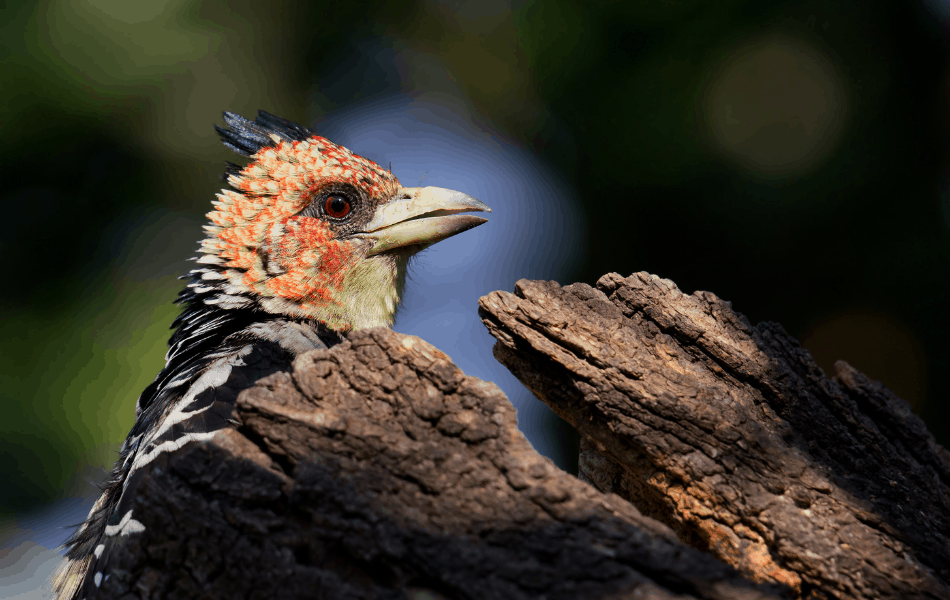
Over 60 percent of South African bird species can be found in the Kruger. For the birdwatcher, who just observes birds in their surroundings, or the true birder, who travels to see birds relevant to that area, the park is a perfect bird paradise. Colorful birds, rare birds, migratory birds, birds of prey, or just seed-eating birds. Are you a bird watcher? This is then a perfect destination for you!
If you need to more about the Kruger National Park, read my article on Tips to Know before you Visit. Spotting the Big 5 group of animals is the prime focus of those visiting. Have a read!
Prior to visiting Kruger, print out The Kruger National Park Bird List and tick off the birds you are able to capture around the camp or out on a game drive. It is for FREE. I love this list and I go through prior to visiting the birds I would like to spot.
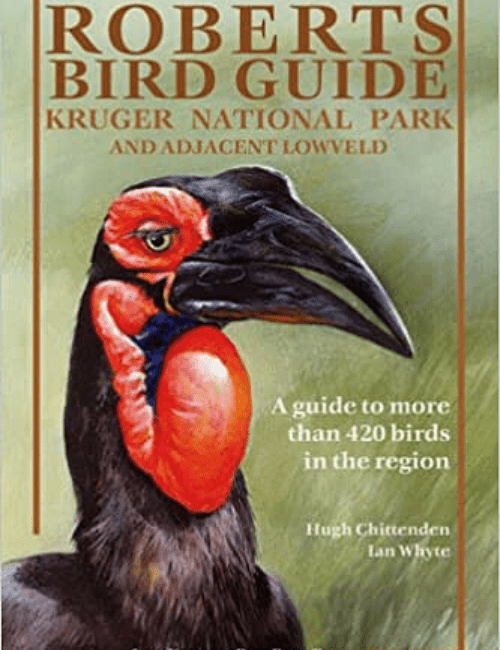
Guide to More than 420 Birds in this Region
The illustrations are superb and allow you easily to spot the birds you are looking for in the park. I take my book with me and refer to it if I have any doubts.
An app that you can download on your phone is Sasol Birds of the Kruger National Park. Also wonderful illustrations and especially if you do not want to carry a book around with you. I am still old school in many ways, so do prefer the Roberts Bird Book.
Birds are a psychological connection with nature and I give them different classifications when observing. The hobby is inexpensive and enormously rewarding. I will be discussing five different categories: Birds of Prey, Pretty Birds, Bird without Flight, Rare Birds, and Migration Birds.
2 Species of Birds of Prey – raptors
Raptors mean to “grasp or seize” – premium exhibit in the world at Kruger!
| “Lord grant me the wings of an eagle, Allow me to soar upon high. Lord grant me the wings of an eagle, Allow me to float in Your sky. Lord grant me the wings of an eagle, Allow me… in your Rapture to fly.” |
58 species of raptors are found in the park and there are 11 different groups based on their form and structure
- owls which are primarily nocturnal
- buzzards are medium-sized, have no feathers on their lower legs, hunt from rests
- snake-eagles that catch snakes and can vary from medium to large in size
- fish-eating raptors that swish down to catch their prey just below the water
- vultures which mainly scavenge off a dead carcass
- the secretary bird is the only one in this group
- hawk-eagles and eagles are large are strong. Their legs are feathered
- sparrowhawks and goshawks have smaller wings enabling them movability through the awning of the woodlands
- kites which have diverse shapes and sizes. Great fliers, therefore their wingspan is larger
- harriers, medium-sized raptors which scour the grasslands and marshlands.
- kestrels and falcons are extremely fast. The kestrel hangs in the air before attacking
1. African Fish Eagle also known as River Eagle
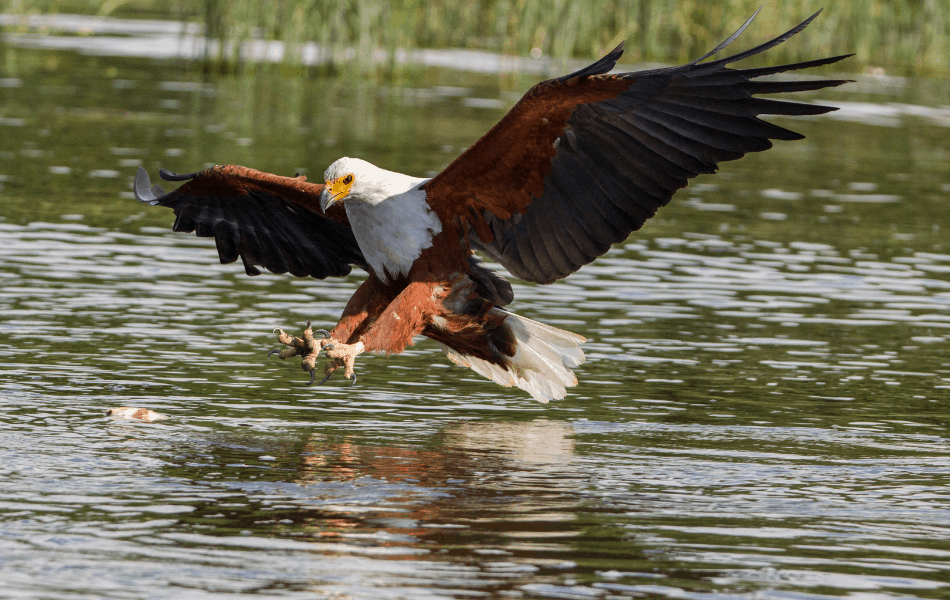
Voice of Africa
Wake in the dawn of the morning with the thrill of the cry of the Fish Eagle! The call is so distinct and is known as “the voice of Africa”. This sound rips me inside with pleasure each time I hear it! They have two distinct “voices” One when it is perched or in flight and the other when it is near the nest.
Plumage and Eggs
The plumage of the male and female does differ slightly, with the male being more striking. The female’s eggs are white and she can lay up to 4 eggs. Their height is approximately 73 cm and can weigh up to 2000 gms. They are monogamous for life unless one of the partners dies, then they will search for a new mate.
Diet and Eyesight
As their main diet is fish, catfish, and other aquatic creatures, they are mainly found close to rivers and very high up in the trees. Their eyesight is incredible and they can see a fish jumping out of the river 3 miles away. They are also thieves and sometimes do steal prey from other birds of prey. (kleptoparasite)
Big 3 Eagles
Three eagles, Verreaux’s Eagle, the Martial Eagle, and the African-Crowned Eagle are regarded as the Big 3 Eagles of the 15 different species found within the Kruger. Although I find them breathtaking, the Fish Eagle has always been dear to my heart as I have observed it “fish”, heard its cry, and seen a nest with two babies.
2. Vultures – assist the barrier of prevention of diseases in the ecosystem
Clean-up Carcasses
Although many refer to the vulture as ugly, they are vital in the clean-up of carcasses, because if the carcasses are left to decay and rot, the disease would spread to other animals and humans. What is so terribly tragic today, is that the poacher knows the vultures flock to the dead carcass of the elephant or rhino.
Poachers
Forever observant, game rangers see the gathering of birds flying over the poached kill and will go directly and search for the poachers, but sadly the poachers are fighting back and poisoning the vultures.
Poisoning for Medicinal Purposes
Poisoning of vultures for medicinal purposes has also become predominant in the Kruger. As vultures are slow breeders and often just have one chick, the increase of the vulture population is slow and many are been killed off.
Jayne Galassi
Artist and Illustrator
“My depiction of the vulture is symbolic of the danger to this hero of the wilderness.
In South Africa, the increasing danger of Vultures is a cause for great concern. These huge carnivorous birds are essential to the environment as their scavenging habits rid the wild of decaying corpses. Intentional poisoning is considered to be the prime cause of over a thousand deaths in the game parks alone last year.“
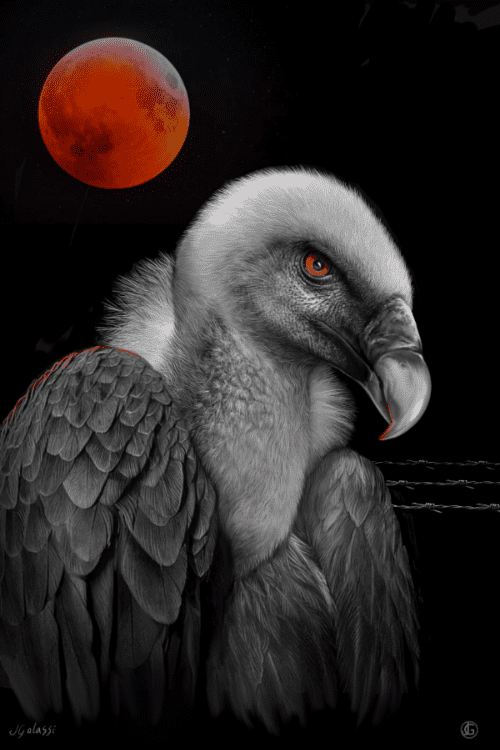
“Studied at Johannesburg Art College and finished Fine Arts degree through the University of South Africa.
Most of my previous work has been sold to private collections, local and international through Cape Town galleries or private commissions.
A project involving the depiction of African Wildlife came my way and being a child rooted in Africa, I gave a lot of thought as to how I would depict the wild and undeniable beauty of these beasts, at once savage and terrifying and utterly magnificent. I did not want to paint a postcard scene but rather chose to engage the viewer with those penetrating eyes that seem to gaze deep into the soul. I am all that is Africa, the fierce and cruel beauty that is this continent. I hope to render a conscious awareness of the vulnerability of the wildlife in a natural world that is being threatened constantly.”.
Spotting a Vulture
Seeing a vulture close up at the Kruger is rare, but if an animal has been killed by prey, you will see one once all the other hierarchy of animals have had their fill. They are exceedingly patient creatures and will wait up to 36 hours to have their morsel.
3 Collective Nouns for Vultures
Vultures fly in flocks and are extremely social birds. “Committee” is the collective for vultures. When they are feeding together that collective noun is a “wake”. As they fly around together hovering over the carcass, they are known as a “kettle”.
| They look rather prehistoric! Six out of the nine vulture species reside in the Kruger. Scavengers they are and their hooked beaks give away their true purpose. To rip and tear the meat! Their claws are not meant for catching prey. They can fly 100s of kilometers a day, searching for their next meal. Each one of the 6 different species has a different feeding habit and is of a different size. |
2 Pretty Bird Species in the Kruger National Park
1.Malachite Kingfisher
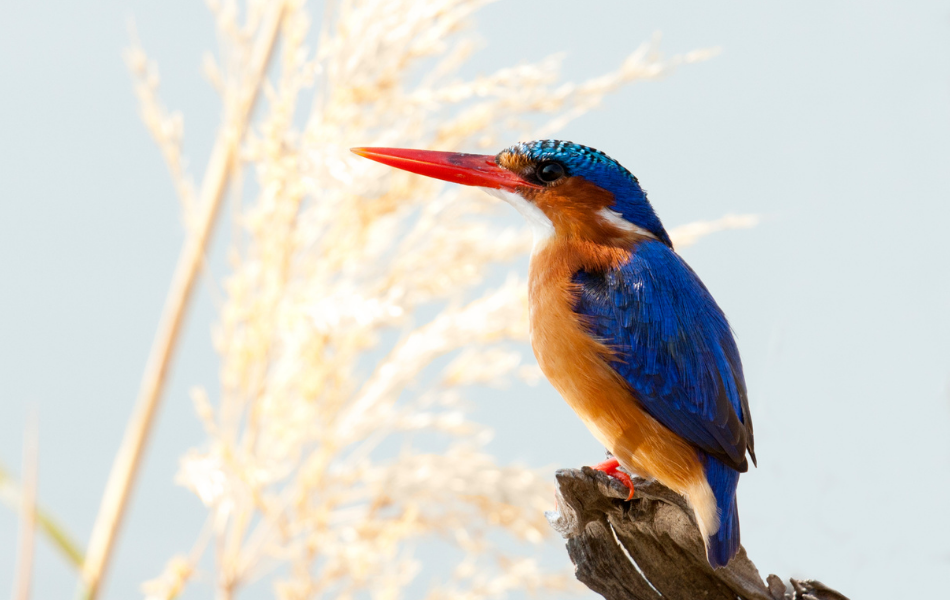
- tiny bird about 14cm high
- sits on branches over a slow-running river during the early morning, day, and early evening
- they do not fly high into the sky, barely above the trees
- fly directly to their catch of fish, frogs, crabs, insect larvae and even prawns then return to their perch to consume their food
- if disturbed it will raise a little crest on its head
- they live in numerous different habitats
- the plumage of both male and female are the same
- it is monogamous unless the one mate dies, then it will find a new mate
- a hole in the ground will be its nest
- they lay between 3 – 6 white eggs
- prefers to be by itself or with a mate, not found in flocks
- has a vociferous voice and melodramatic courtship display
- Brilliant colored plumage with bright orange beak and orange claw
2. Lilac-breasted Roller or “rainbow rollers”
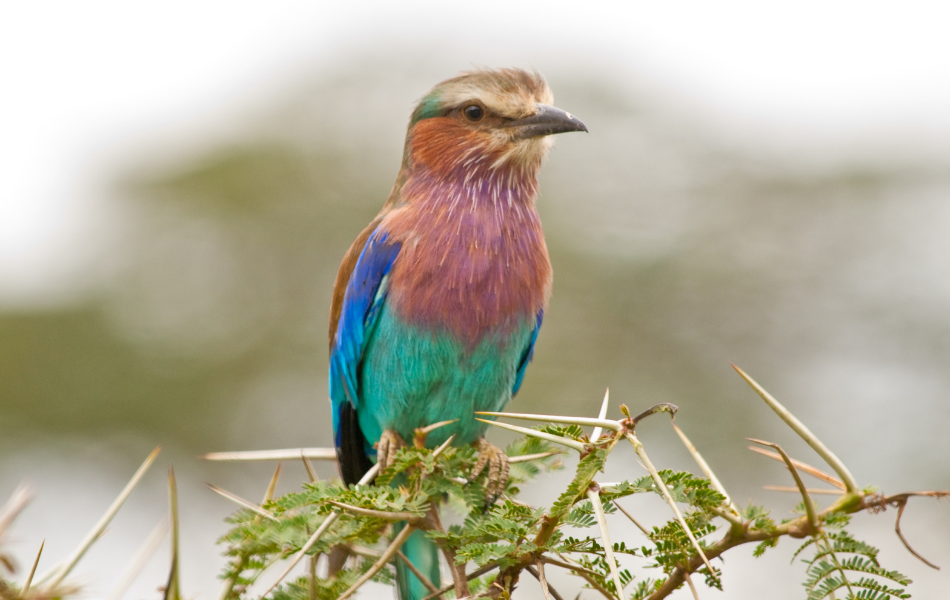
Coloration
Lilac-breasted it is! So beautiful with all those 8 different colors, (White, green, black, lilac, blue, reddish-brown, turquoise, and yellow!), caused by the variety of different pigments which create multicolor feathers. This handsome assortment of plumage assists with their attraction to the mate when the male does his mating dance.
They are monogamous but sometimes live in small groups in winter. Both the male and female have the same coloration, therefore are not dimorphic.
Habitat
Their habitat is wooded and savanna areas, with trees that are well-spaced, furthermore they are highly territorial.
Appetite
Carnivorous cuisine consists of ground prey, such as beetles, snails, scorpions, rodents, crickets, little lizards, small amphibians, and even small birds and crabs.
Life Span
Their life span in the wild is about 10 years.
Voice
You rarely hear them as they are mostly silent birds, but when mating or their territory is in danger, their call is hardened and repetitive and lasts for one second.
Ostrich – Bird without Flight – ratites
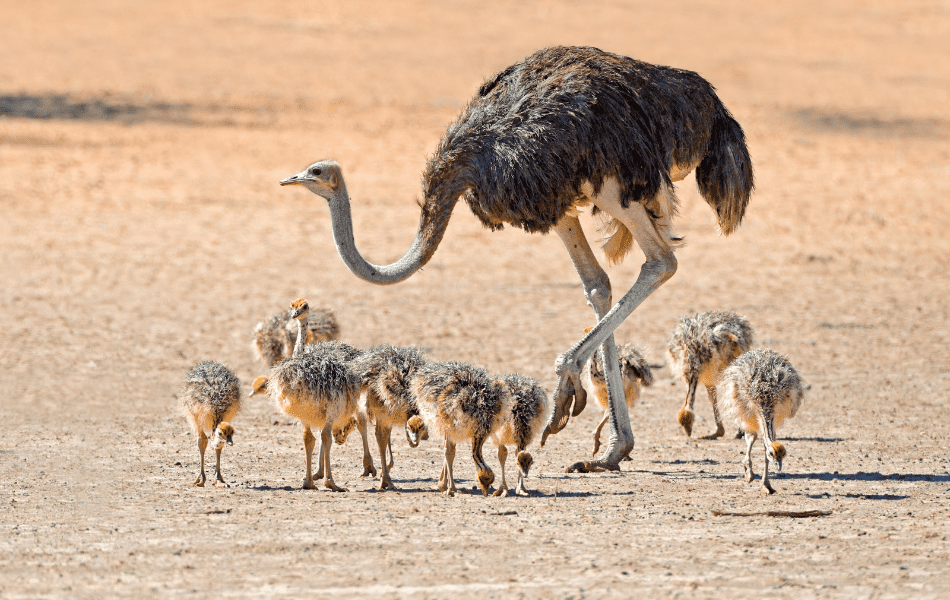
Can you believe the largest bird cannot fly as it does not have a keel on its breastbone? Many movies have shown the ostrich to be not very bright as they swallow pebbles because they need these as roughage and as they have no teeth, these pebbles help to grind the food. Surprisingly, they eat away at most things, including berries, succulents, a variety of grasses, insects, seeds, and loose bark. Most creatures have one stomach, but an ostrich has three.
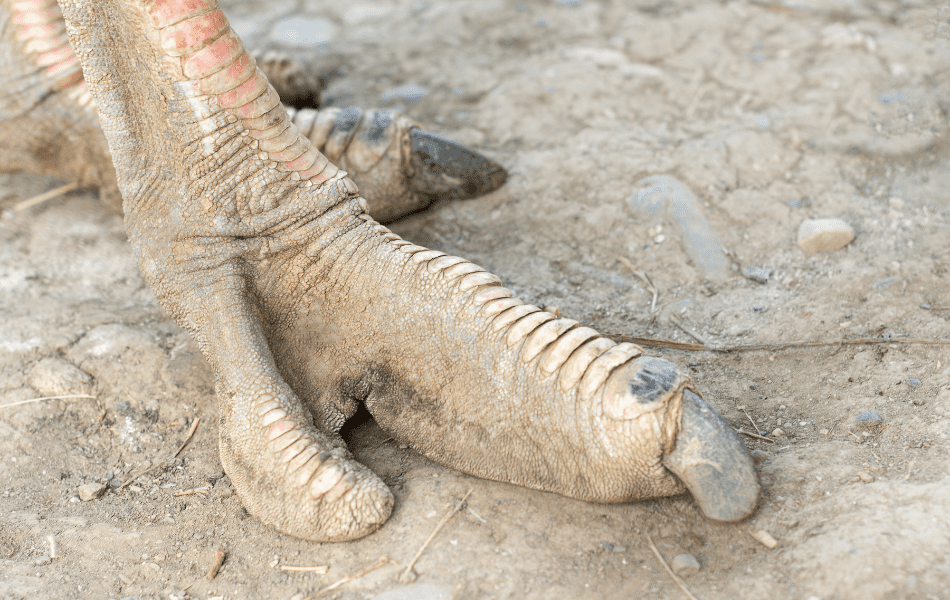
Ostrich has two bare thick legs that can run very fast, up to 70kph/43 mph! Never go too close, as they can kick very quickly and the claw at the end of their big toes can be deadly to a lion. Their long protruding neck allows them to reach the ground while eating without squatting and when nesting on the ground, to keep an eye out for predators. Males and females have different plumage, to illustrate that the males are black and rather striking, but the females are brown and drab.
Did you know that the males help with nesting? As they have black plumage, they sit on the eggs at night and the females who are brown, sit on the nest during the day.

They are social creatures and often nest in communities, with the female always being able to identify her own eggs. (Sometimes 60 eggs are gathered together in close proximity).
| Many products are made from an ostrich. The feathers are used for decorative purposes and cleaning, and the meat is farmed commercially and has become very popular. The unfertilized eggs, which are the largest in the world, are cleaned out and used for decoration. In the Kruger, the ostrich is not farmed but left to be wild in its natural habitat. |
A unique decoupage egg designer is Gala Star CC, which decorates and sells its eggs all over the world. Amazingafrica.online sells the eggs on an international platform.
Rare bird spotted in Kruger National Park – European Honey-Buzzard
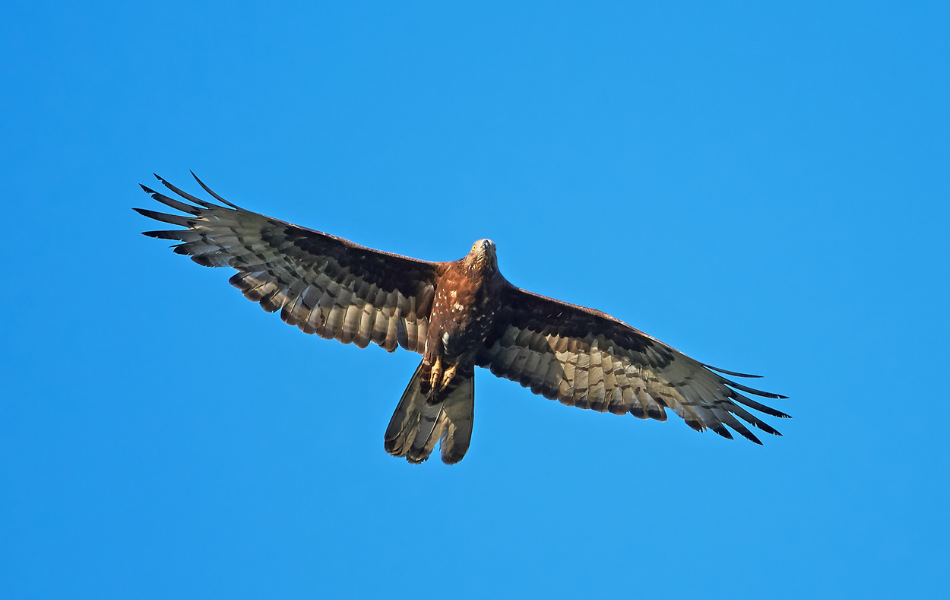
Every now and then, rare birds are spotted in the Park. Birds that are not usually seen. European Honey-Buzzard is one of them, as they are migratory birds, but during the winter months in Europe fly down to Nigeria, not often down to South Africa.
Devouring wasps, honeybees, hornets, and bumblebees. moreover, their heads are shaped so they can get into nests.
Are these birds vagrants and lost when seen in the Kruger? So if you do spot one, make sure you take a picture as evidence! A few have been seen.
Migration birds within the Kruger National Park
Most birds that migrate through the Park belong to different categories.
- the Nomads – these birds fly all over primarily where the food is
- Intra-African migrants – those that migrate just in Africa depending on the season
- Palaearctic Migrants – birds that arrive during our summer months from up north when it is winter, then return during our winter
- Vagrants are those who are more than likely, lost
White-throated swallow – an intra-African migrant
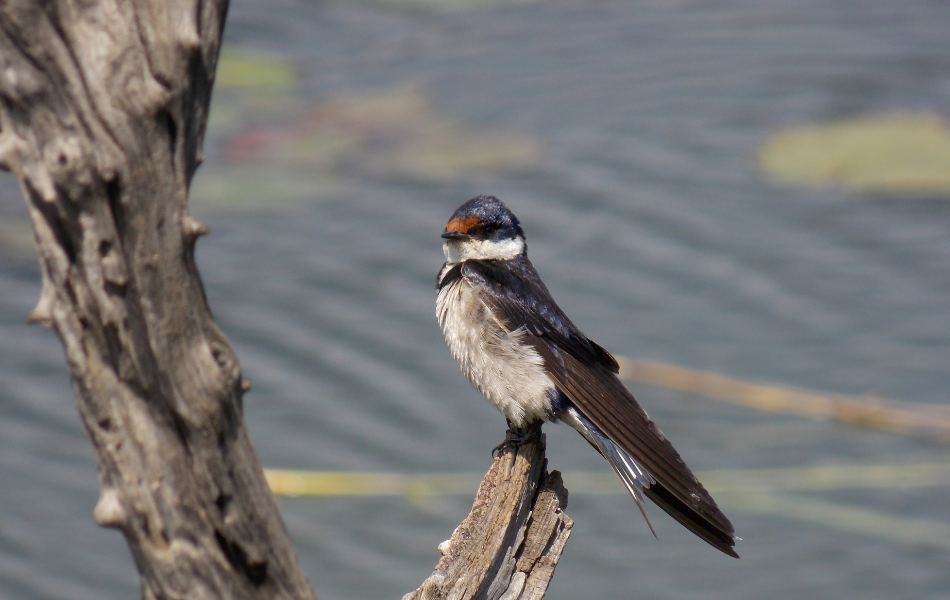
Swallows can have up to 1000 birds in one flock which migrates from up Africa to South Africa and the Kruger between July and September, departing again around April and May.
Deciding to position themselves near rivers and dams as the insect life around these waters is abundant, in grasslands and mountain areas, which they catch in mid-flight, as they swoop down at great speeds, twist around in midair and swoop down again! Spectacular to watch!
Breeding in the Southern region between August and March, hence they can have between 2 to 5 eggs at a time. Their nests are bowl-shaped, made with mud, hair, and feathers, against a solid surface such as a rock incline. Returning to these nests year after year is quite common.
Diverse species of antelope found in the Kruger National Park
- 21 antelope species found in the Kruger National Park
- a baby antelope is called a calf
- Tsessebe is the fastest antelope in the park and can run up to 90km per hour
- sometimes found in monogamous pairs
- primarily grazers
- males have horns on their heads, are more developed in larger species, and use their horns to fight against each other over females, not against other animals unless for protection. These vary in size. Some females have smaller horns
- they live in large groups called herds
- males are called “bucks” and females are “does”
- their lifespan is about 10 years
“Not all Antelopes are Gazelles, but all Gazelles are Antelopes.”
Some differences: Gazelles are smaller, and both males and females have horns, and stotting (“Gazelles move slowly before bolting vertically into the air. Upon landing their leap, they hit their full stride to get away from the danger”) Good example of a gazelle is a Springbok.
21 Antelope found in the Park – (not gazelles)
Still to this day, I can get confused about which antelope I am looking at. Having a photo on my phone to identify what I am looking at most certainly helps.
1. Impala
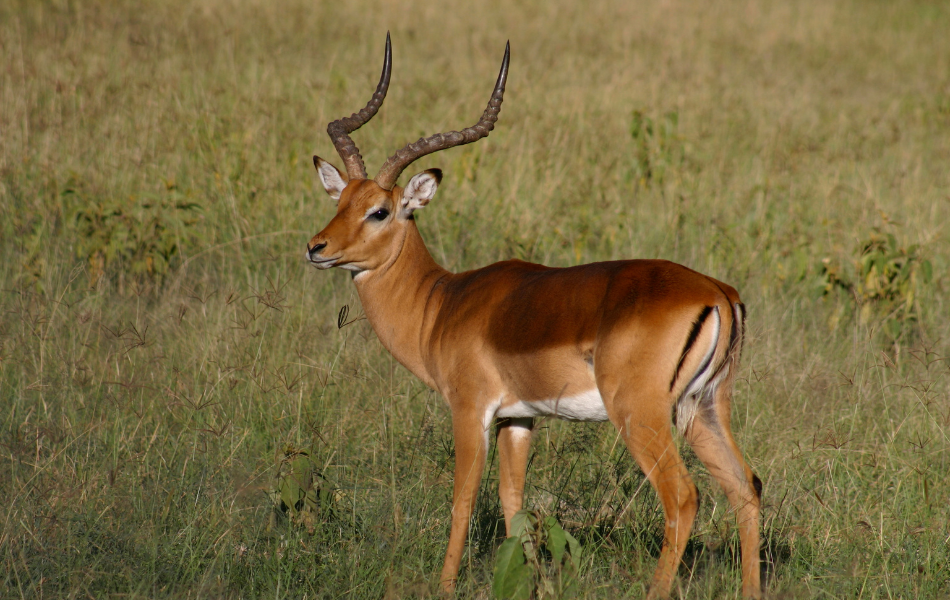
These are the most common antelope found throughout the Kruger, identified by their horns which have an S-shape. They are elegant and beautiful and Graze on the grassland often close to a wooded area.
2. Eland
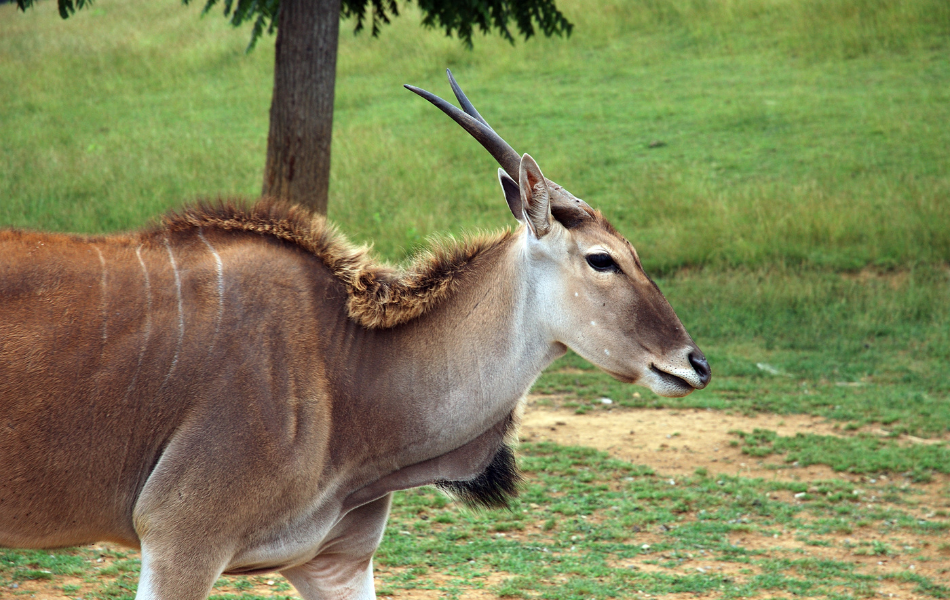
Eland is the largest of the antelope and can weigh up to 900kg, but although large, it is also the slowest BUT is the greatest jumper. compare them to an ox, such as a thick neck, large hump, and a flap of skin that hangs from the neck, known as a dewlap.
3. Waterbuck
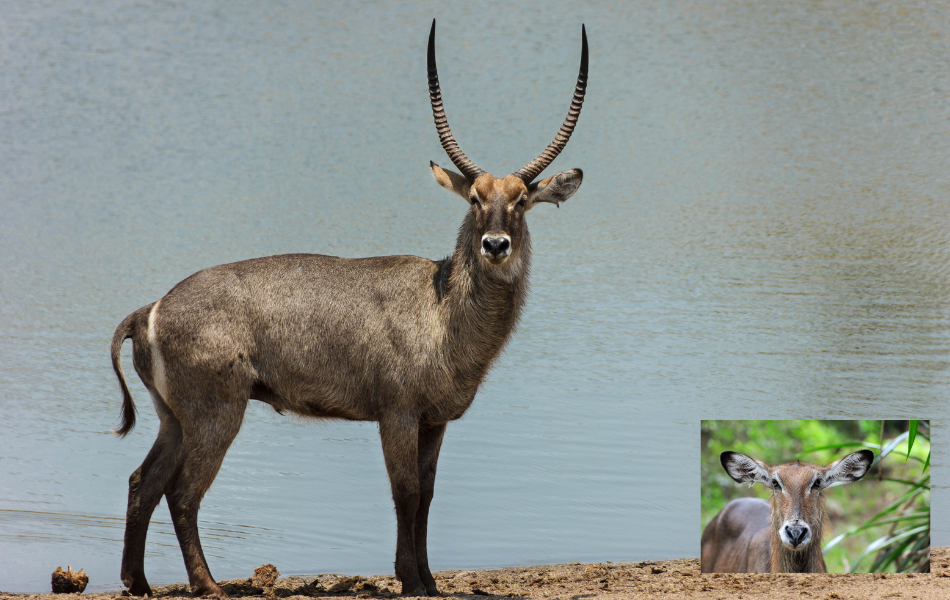
Here you can see both the “buck” or as they are referred to “bulls” with their horns and the “doe” or “cow” without. Look at the white circle on its hindquarters, influencing the herd to follow due to this circle. Relaxing next to the water’s edge and are known to rush into the water and splash the carnivores who do not appreciate being splashed. For that reason, their fluffy brown coat is very appealing and emits an oil that is thought to serve the purpose of waterproofing.
4. Bushbuck
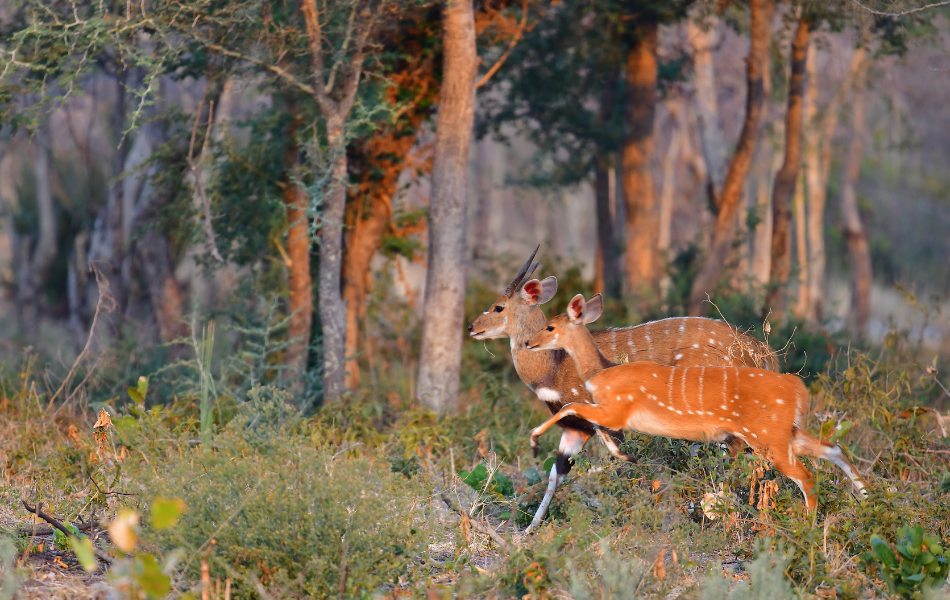
I called these antelope the beautiful “kindergarten painted” buck, with their exquisite markings on their bodies and the male has horns. The gestation period is 6 months, but sometimes they give birth twice a year, nevertheless, the females do not mate until they are 3 years old.
5. Mountain Reedbuck
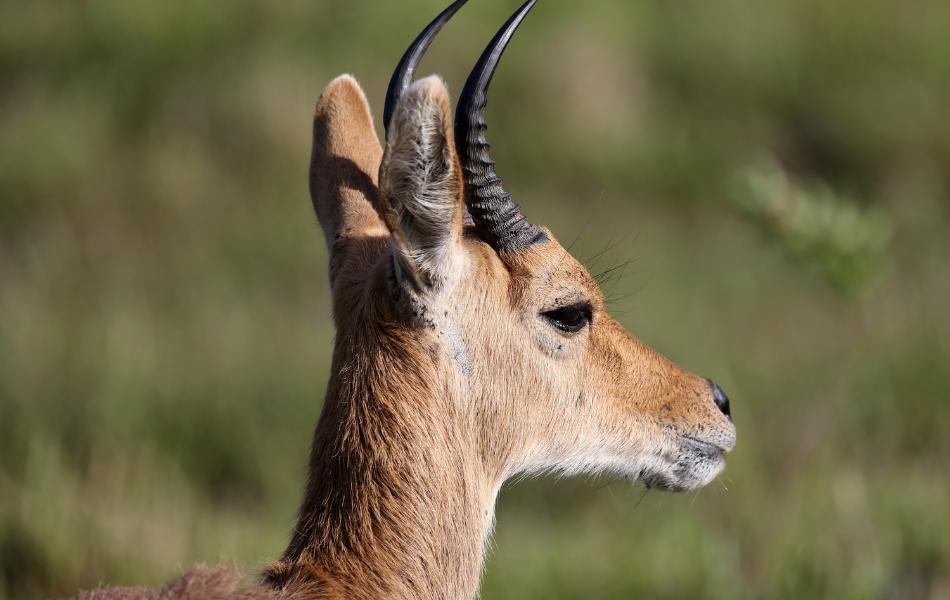
- males only have horns
- their coat is a dark brown and as you get closer to the neck and head a reddish tinge appears
- underneath is white
- smaller in size than the Common Reedbuck
- herds are small
- habitat as their name suggests is mainly in mountainous areas
6. Common Reedbuck is also known as the Southern Reedbuck
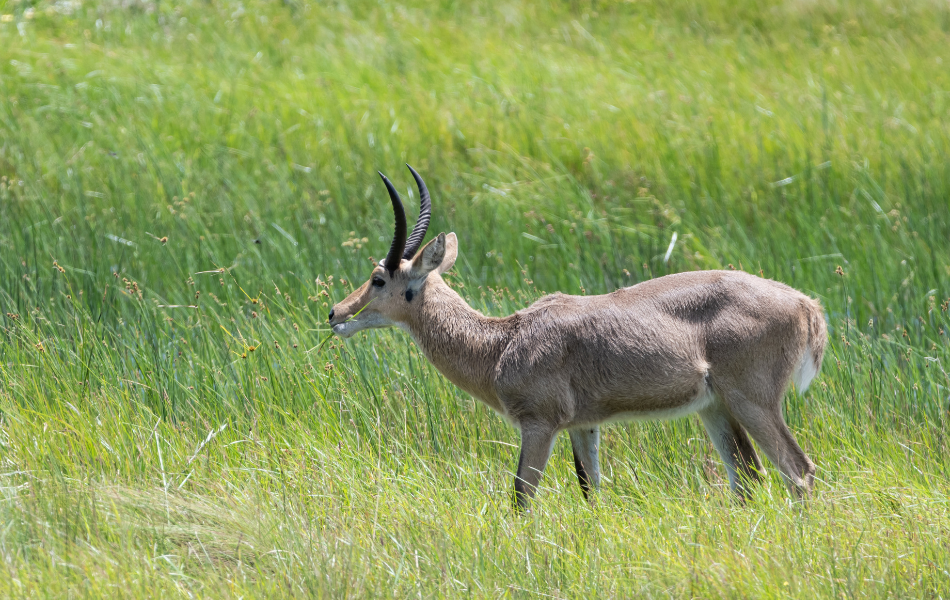
- Feed mainly at sunset and sunrise and lie in the grass during the day
- They have a reddish-brown coat
- Males weigh approximately 68kg and females 48kg
- A small black glandular patch can be seen at the base of each ear
- They prefer to live in pairs, or alone and only sometimes do you see them in small herds.
7. Suni
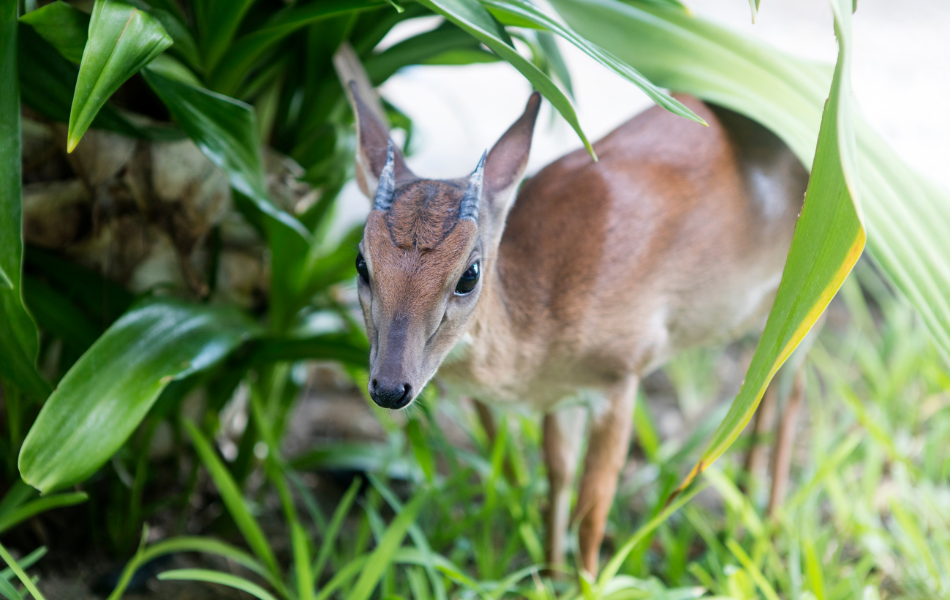
The Suni only weighs about 5kg, being shy with a reddish-brown coat, but darker on their backs. It likes to locate in dense underbrush for its protection while crouching and they are small with thin legs. Only the males grow short thorn-like horns.
8. Sharpe’s Grysbok
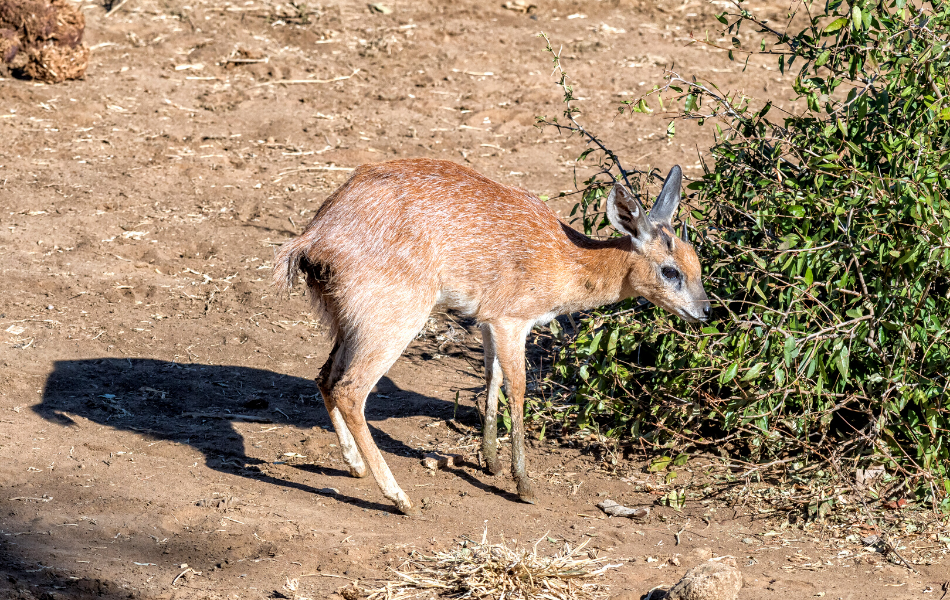
Terribly shy antelope! Only weighs between 8 to 11 kg. The body is stockier at the back with a streaky coat, reddish tinge, with white grains. Tends to stick to the rocky hills and encountering one is not common. They browse during the night and tend to hide during the day in tall grass.
Tsessebe
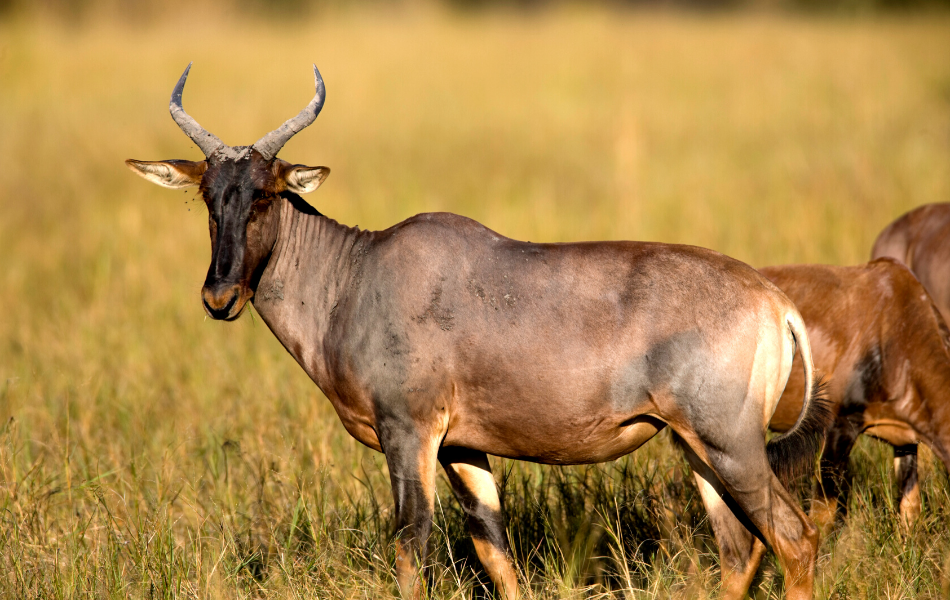
The bulls are large and have a mass of up to 130 – 140 kg. Coats that are brown with a darker steak running down the front from the horns to the muzzle. The legs and chest are darker too. They may look rather inept, but they are exceedingly fast when threatened and can run up to 80 kilometers per hour.
Blue Wildebeest
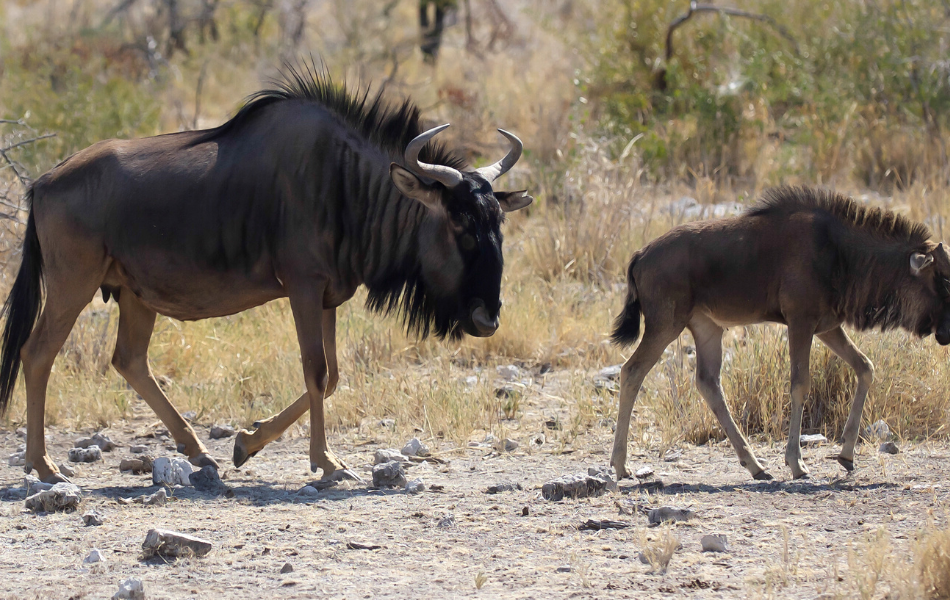
Both males and females have horns. The reason is that females need to ward off predators in their primary habitat which is grassland. They are found in large herds, and the numbers alone, scare off predators. When the sun is shining you can see a blue sheen on their coats. Often you will see the wildebeest alongside the zebra. There is no competition between the two of them as the zebra prefer the longer grasses and the wildebeest the shorter tufts. The zebra also feel protected amongst them.
Sable Antelope
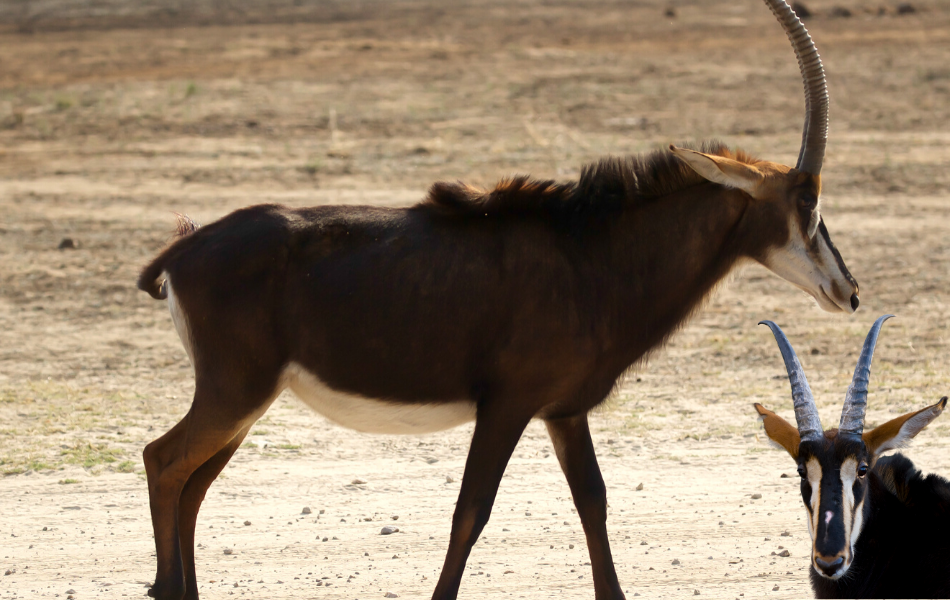
A male can mass up to 235kg. When they are young, their coats are quite light, but as they mature it gets darker brown. The females have more of a reddish-brown coloring. They avoid open plains and are many found in light woodlands. White markings are on their faces and tummies and their horns are very impressive!
Kudu
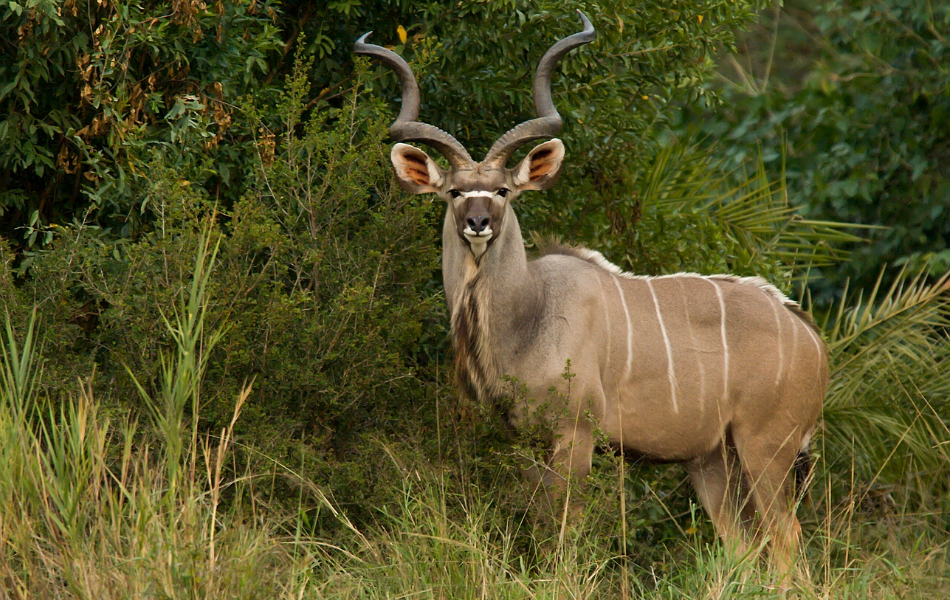
Sadly these magnificent creatures are a hunter’s second most sorted prime trophy to the impala! The largest of the antelope and truly impressive! Their horns spiral majestically upwards and when in a challenge during mating season, with another kudu, the aim is to bring the opponent to the ground. Shrubs and trees are their preference. Both males and females are particularly peaceful. Listening continuously with those large ears and on high alert. They have white streaks going down from the white mane and a streak across the front of the head.
Nyala
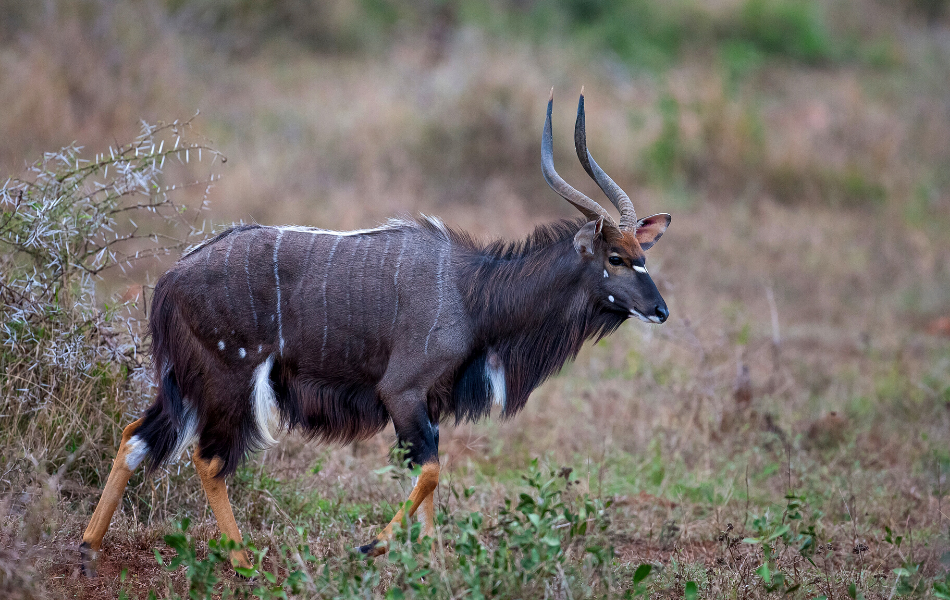
Both male and female Nyala have shaggy coats. Charcoal grey male coats with which hair spots and long grouped streaks on the undergrowth on the neck and rear part of the tummy. Vertical white streaks running from the spine downwards on either side. There is a big difference between males and females in appearance. They are reluctant to come out of the forests or woody areas during the day, so come out in the early morning or evenings.
Klipspringer – “rock jumper”
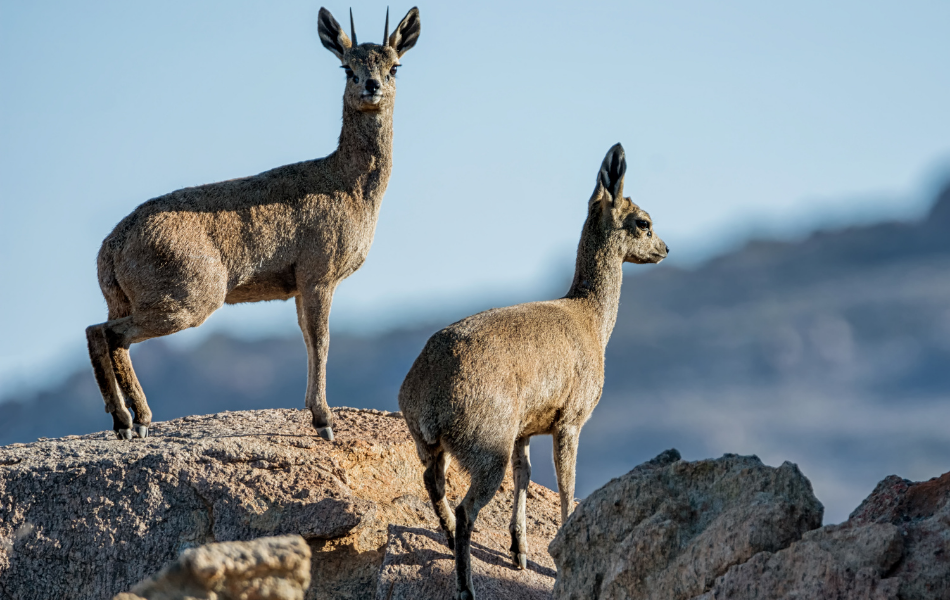
Hardly ever eats grass! Loves flowers, shrubs, herbs and shoots. Coats that are thick and coarse as protection against the rubbing of the rocks act as camouflage in rocky habitats. The horns of the male are thin and sharp and not very long.
Steenbok
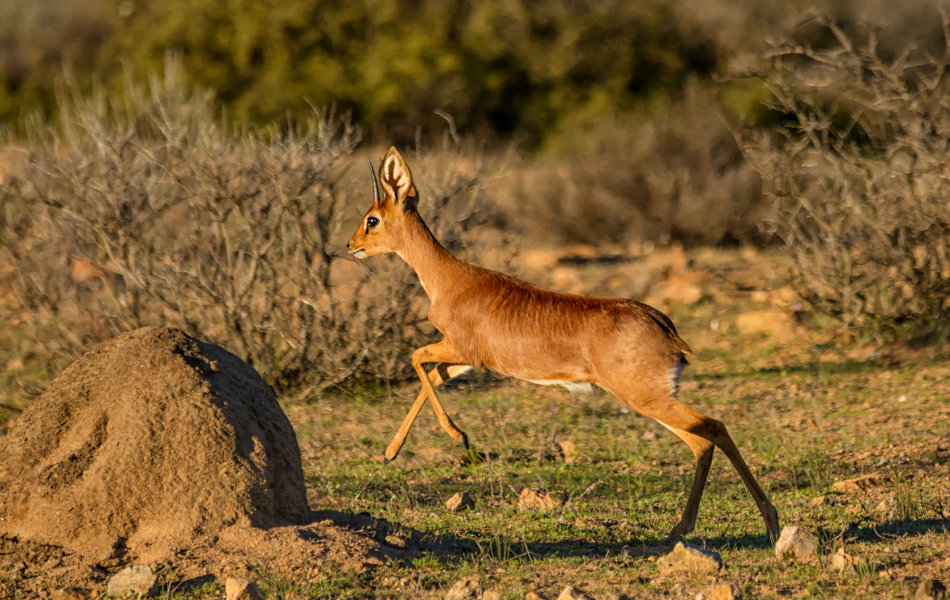
Steenbok only weighs about 12kg. They are not herding animals and prefer their own company. Often they will hide in old aardvark holes and sometimes they bury their dung. Glands between their hooves are used to mark their scent.
Red Duiker
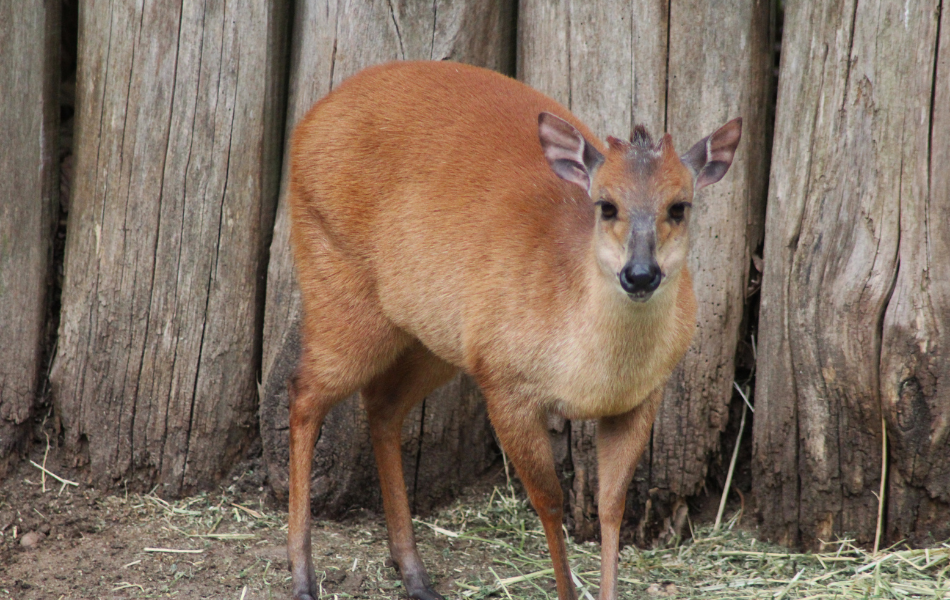
Did you know the females are generally larger and heavier than the males? Both sexes have straight small horns. Common duikers are larger than the red duiker. Their habitat is generally on the outskirts of woodland areas.
Lichtenstein’s Hartebeest
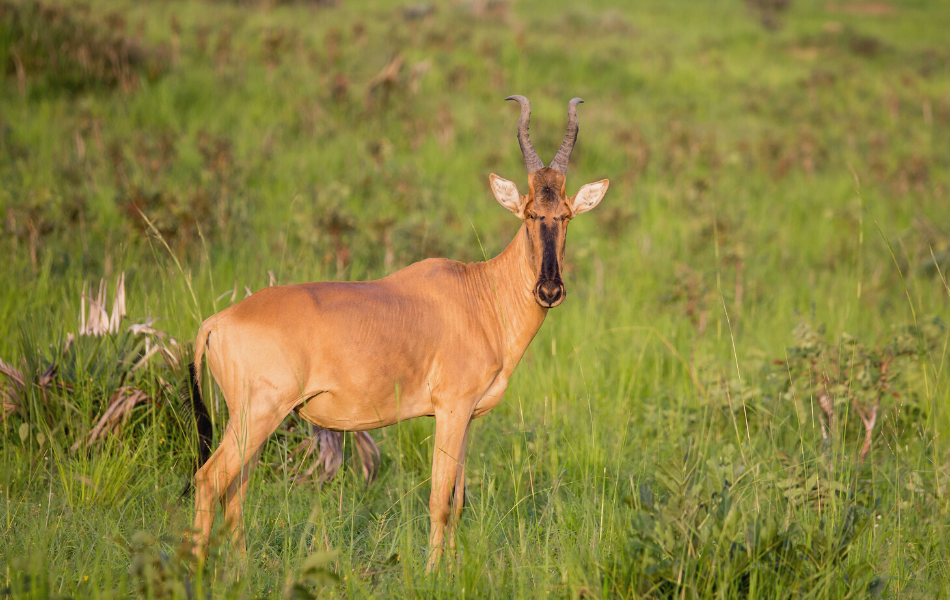
An appearance of a humped shoulder, elongated face and a back that slopes downwards. Even their horns seem too close together. They eat grasses during the daytime and group in herds. Often you will see a male standing with his front legs on a termite hill, doing guard duty.
Roan Antelope
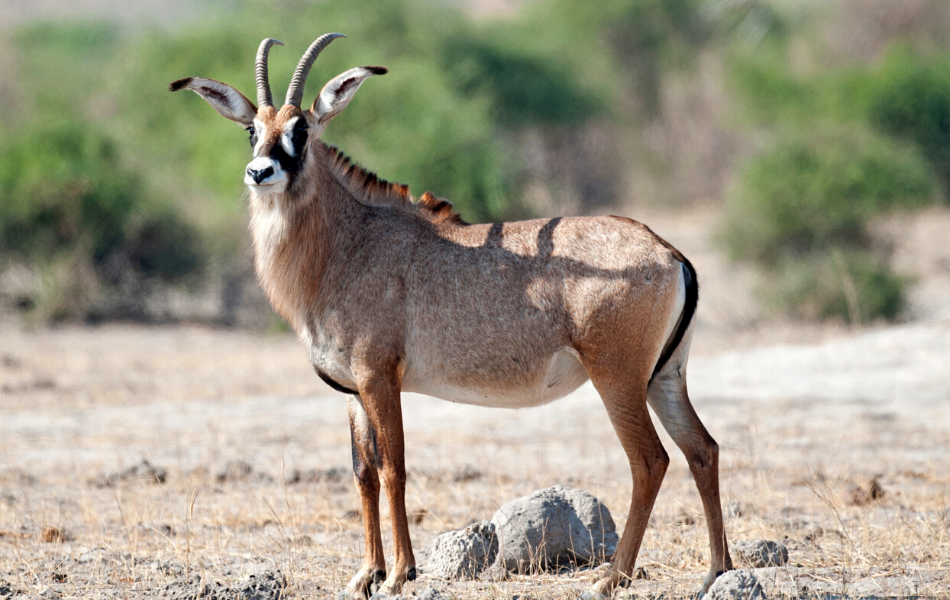
The face of the Roan Antelope is very distinctive. It has black and white markings. Horns that stretch backwards, black on the tail and front. Lighter colouring underneath. Powerful, large and in a herd the female is the dominant leader.
Grey Rhebuck
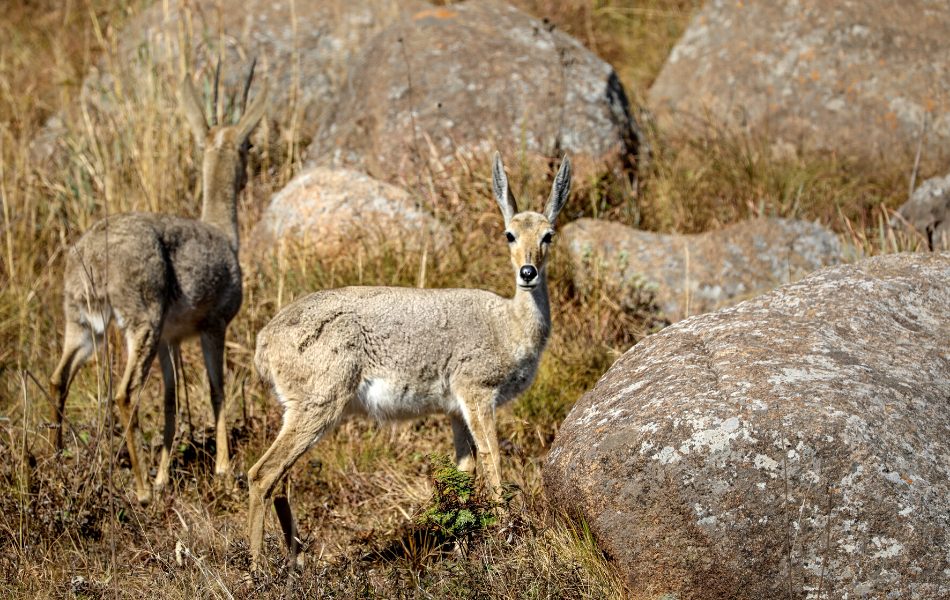
Not often spotted! The fur that covers them is similar to a hare and acts as camouflage especially when they are lying down on the sandstone. Long necks and narrow heads and always alert to danger.
Common Duiker
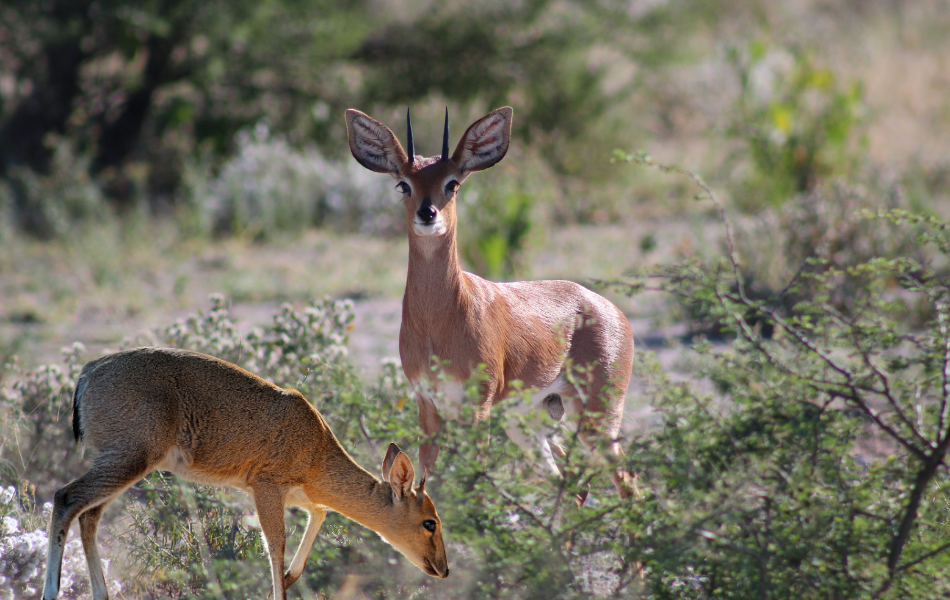
Is a common antelope. Pointed hooves and a reddish colouring. Shoulder height is 50cm and when escaping danger they run in a zig-zag formation. They have a wide variety of food preferences, and sometimes you will see them on their hind legs while they stretch up for fruit in the trees.
Oribi
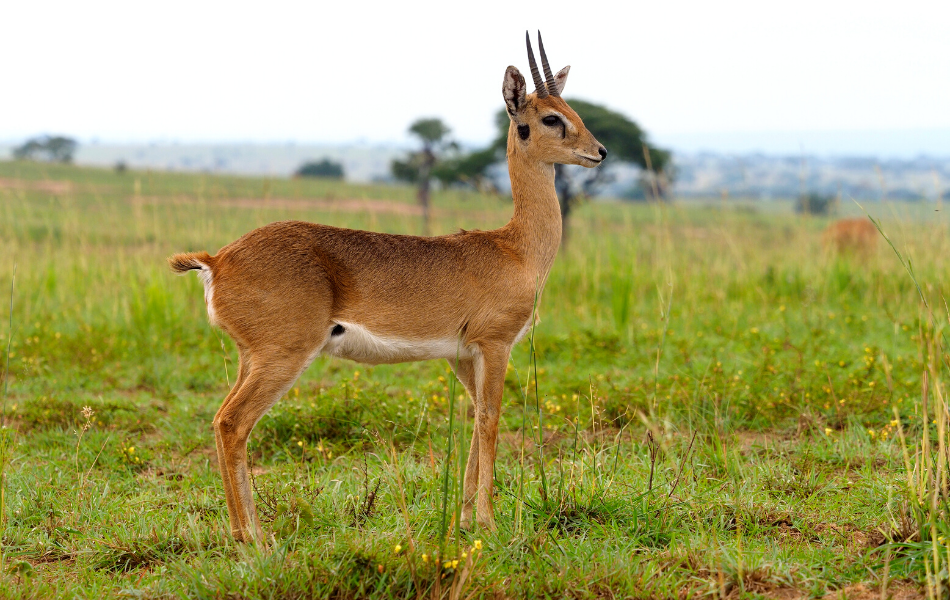
Did you know that the Oribi is water-independent? It obtains an adequate amount of water from the food it eats. Delicate, proud and mainly found on grasslands and open plains. It is regarded as a dwarf antelope and the smallest grazer.
| ANTELOPE NAME | Check/Seen |
| Impala | |
| Eland | |
| Waterbuck | |
| Bushbuck | |
| Mountain Reedbuck | |
| Common Reedbuck | |
| Suni | |
| Sharpe’s Grysbok | |
| Tsessebe | |
| Blue Wildebeest | |
| Sable Antelope | |
| Kudu | |
| Nyala | |
| Klipspringer | |
| Steenbok | |
| Red Duiker and Common Duiker | |
| Lichtenstein’s Hartebeest | |
| Roan Antelope | |
| Grey Rhebuck | |
| Oribi |
Have you been up to the Kruger National Park? Let us know in the comments section what you spotted.
Recent Posts
Discover insider tips to find cheap flights from the UK, save on easyJet, Ryanair & BA, and score the best weekend and last-minute deals. Why You’re Paying Too Much for Flights Most UK...
Discover the sounds of travel, from laughing kookaburras to market chatter, church bells to ocean waves - a journey heard as much as seen. It always starts with a sound. The other day, walking...

